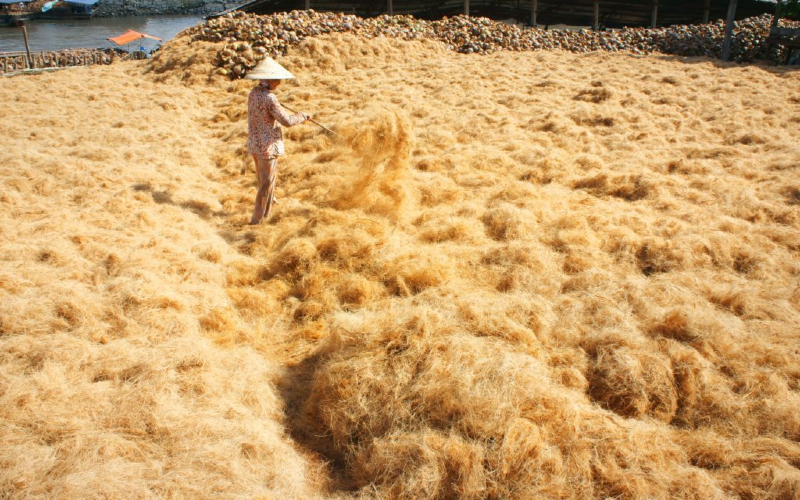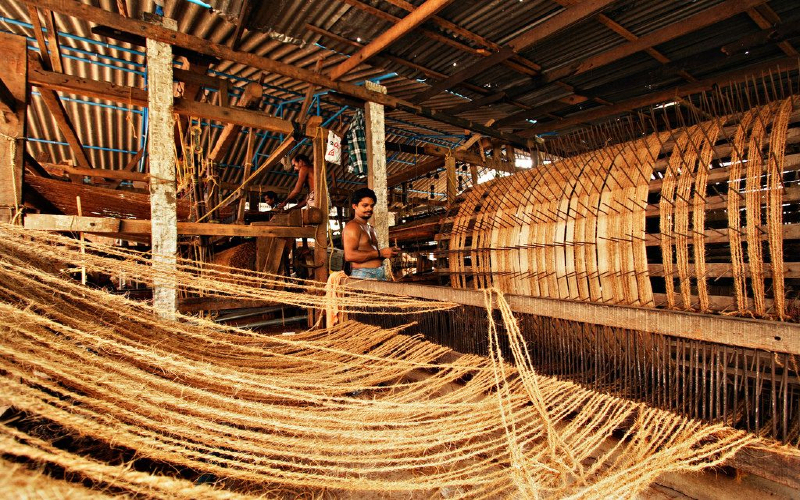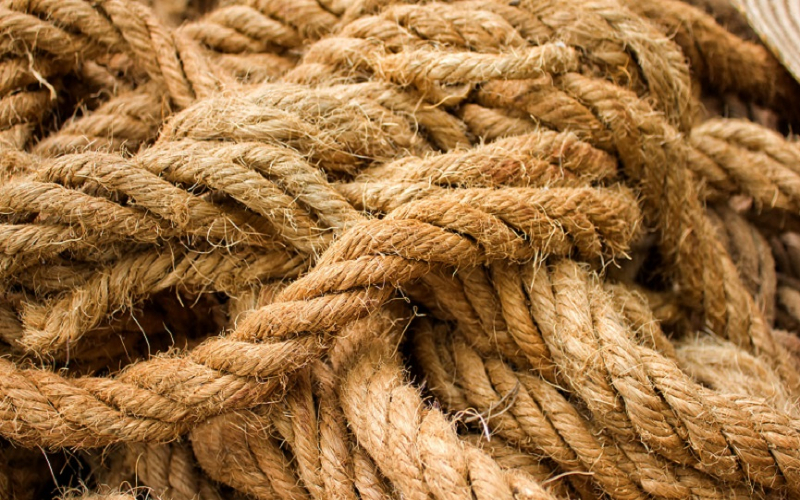Discover the making of coir ropes: How can people make it from coco coir?
Discover the making of coir ropes: How can people make it from coco coir?

Ropes made from coconut husk are incredibly durable and can be used in the same manner as any other type of rope. Making coir ropes requires strength and patience as it can take several weeks to complete. For this reason, be sure to plan ahead if you need the rope within a certain time line. In this article, Tropicoco Vietnam will cover everything you need to know about coir ropes and their making. Therefore, make sure to read until the final end of this post!
What you need to know about coconut coir
Before learning more about coir ropes, Tropicoco will first introduce you to the main material used to compose them. Coco coir, also known as coconut fiber, is a natural fibrous material found between the hard, internal shell and the outer coat of a coconut. The fiber can be extracted from the husk of either ripe or unripe coconuts. Because of this, coco coir is divided into two primary types: brown and white fiber.

An introduction to coconut coir ropes
Coco coir ropes are traditionally made from white coir, which comes from the coconut husks harvested shortly before becoming fully ripe. Because white coir is softer than brown one, the fiber is ideal for spinning into yarn. As a result, it can be twisted into twine or rope, known as coir ropes.
Coco coir is the only natural fiber that is highly resistant to abrasion as well as saltwater. For this reason, it is an ideal material for manufacturing ropes that can be used in a marine environment. As a matter of fact, in the Maldives, coconut coir is the primary source of material used to make durable ropes for boat and house construction.
The making of coco coir ropes

Phase 1: Harvesting and husking
The first step to make coir ropes is to collect the primary material. Coconuts that have fallen from the tree can be picked up from the ground easily. Meanwhile, those still attached to the tree need to be picked by hand or with specialized tools. While ripe coconuts are husked immediately, unripe ones need to be seasoned for a month. Because coir ropes are extracted from immature coconuts, it explains why the manufacturing process is lengthy and requires patience.
Phase 2: Retting
Retting refers to a curing process whereby the coconut husks are kept in an environment that encourages the natural occurrence of microbes. This action helps to decompose the husk’s pulp, allowing it to be separated into coir fibers and a residue called coir pith. While freshwater retting is used for fully ripe coconut husks to produce brown coir, saltwater retting is used for green husks to make white coir for rope-making.
Phase 3: Defibering
Typically, workers will beat the retted pulp with wooden mallets to separate the fibers from the pith and outer skin. This separation is then completed by washing the residue from the defibering process and combing through it by hand or tumbling it in either a perforated drum or sieve. After that, the clean fibers are spread loosely on the ground to dry in the sun.
Phase 4: Finishing the coir ropes

Conclusion
This article has just delivered all the information you need to know about the making of coir ropes. Even though the process takes a long time to complete, its final products are absolutely worth the wait. If you want to read more articles like this, make sure to visit Tropicoco’s blog every day. Still have questions? Contact Tropicoco Vietnam down below to get help right away!
Contact information
Tropicoco – The best substrate
Address: No.20 Ngan Long Villa, Nguyen Huu Tho Street, Nha Be District, Ho Chi Minh City
Email: giathe@tropical.vn
Hotline: +84 983230879
Open Hours: Mon-Sat: 8.00AM-5.00PM; Sunday: Closed

